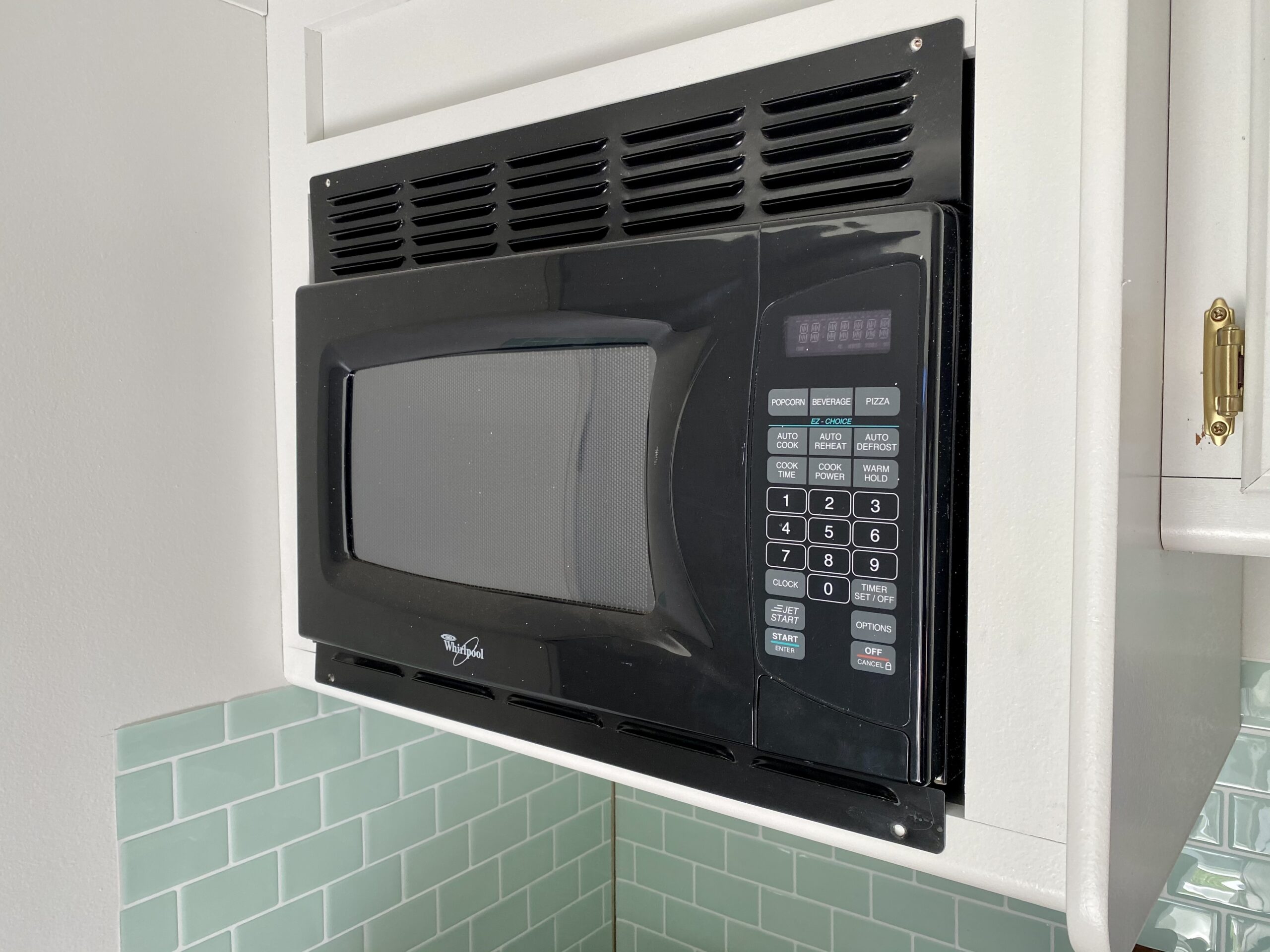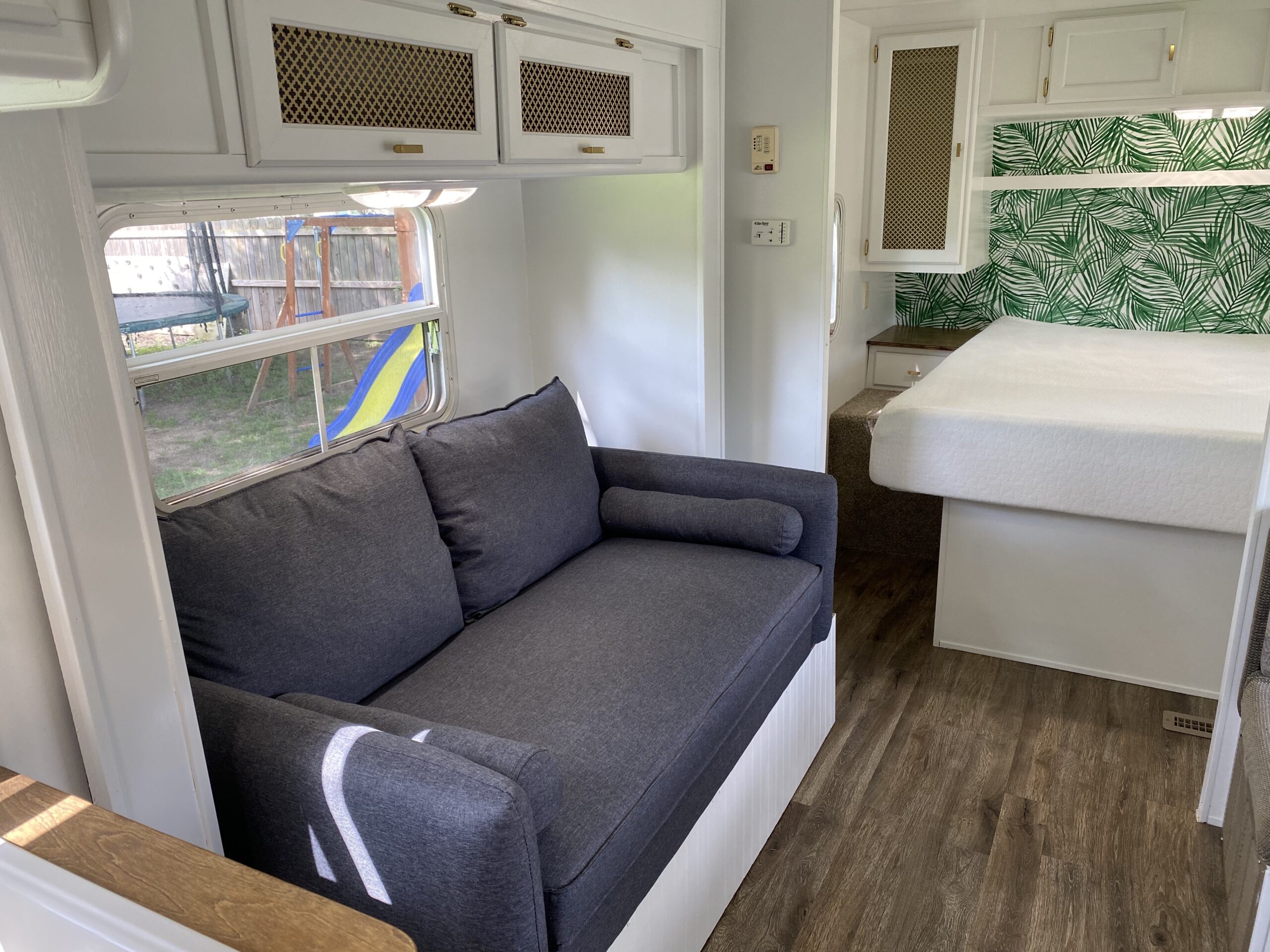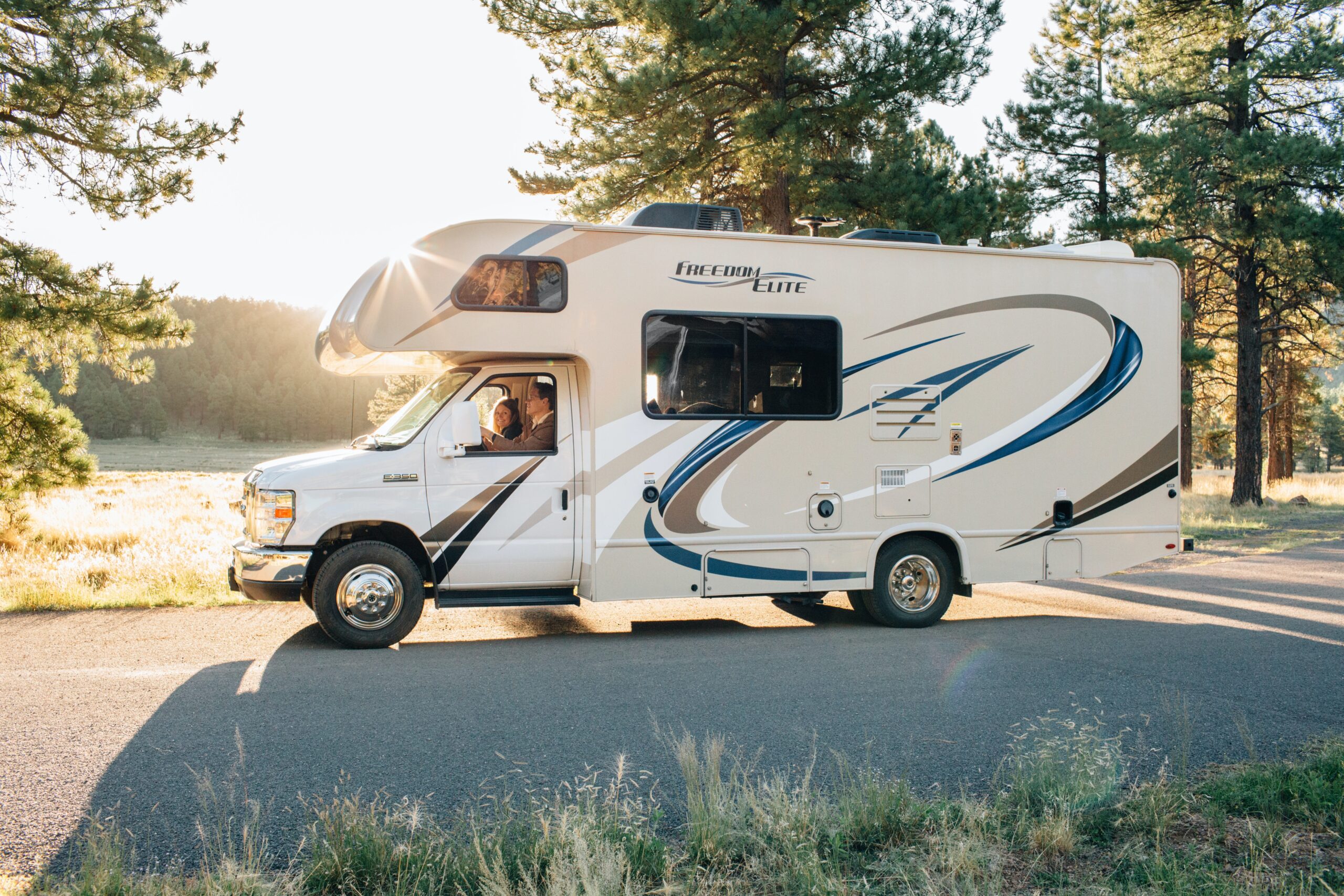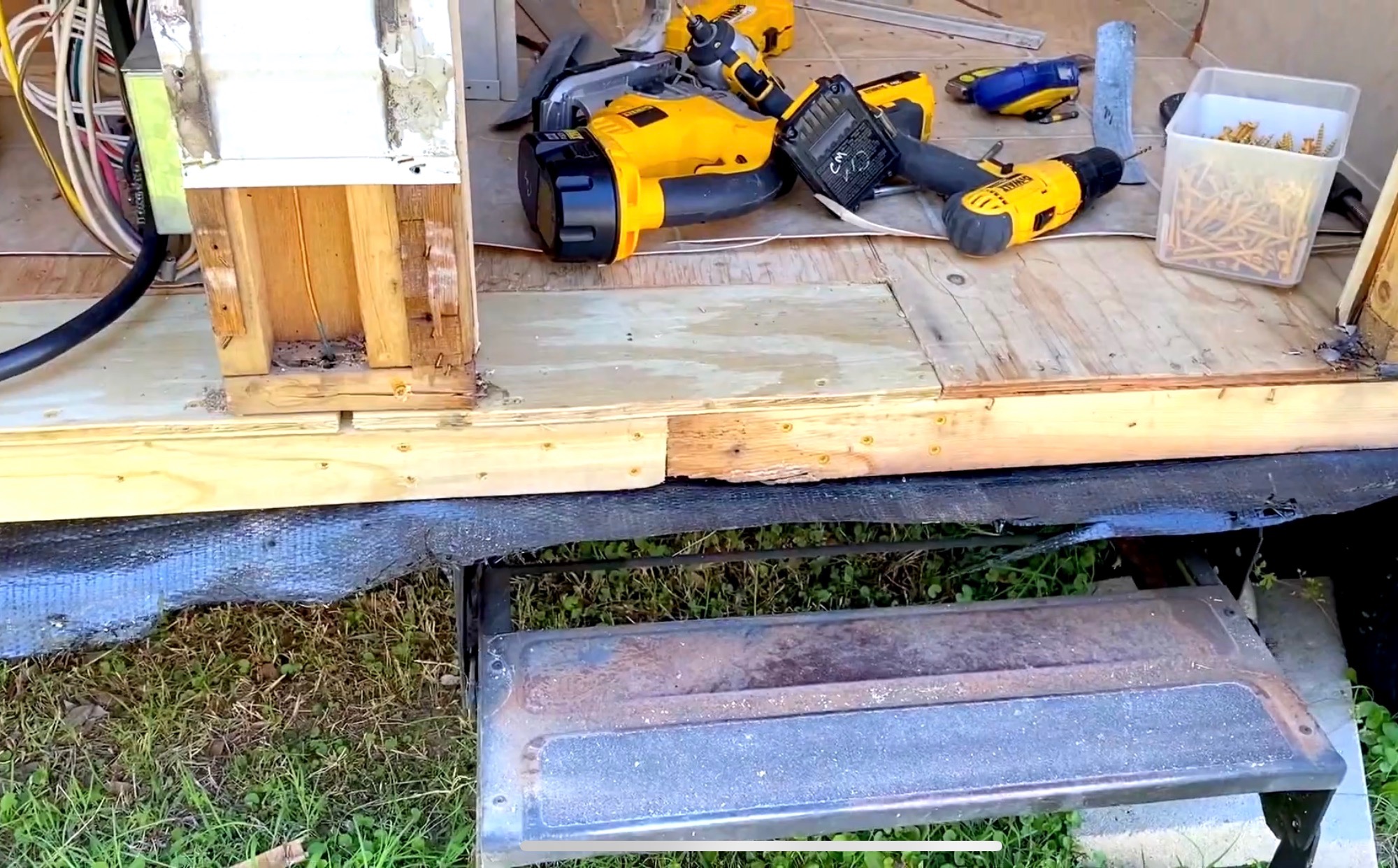RV microwaves make for an efficient and convenient heating experience on the road. They make any RV more comfortable by expanding the range of options you have in what foods you bring and what you can do with your food.
But how do they differ from regular microwaves?
The difference between an RV microwave and a regular microwave is that RV microwaves tend to be smaller and perform at lower power levels so as not to consume too much space or electricity. They also are more likely than regular microwaves to heat using convection instead of radiation.
This article will compare and contrast regular microwaves and RV microwaves, discussing their functions and different options available on the market, and highlighting the differences between them.
Regular Microwaves
Microwaves have been a part of the kitchen appliance set since the 1950s when Percy Spencer invented the machine in response to his experiments with a magnetron.
Basically, he was using a machine to send radio waves to ships and airplanes, and the radio waves that the machine used melted the chocolate bar in his pocket, which inspired him to create the microwave.
Standard microwaves have been built to model this heating by radiation for use in a kitchen, using less powerful radio waves within a compartment that bounces waves from wall to wall to heat food.
They come at various power levels, sizes, and costs, depending on your needs.
How a Microwave Works
A microwave uses microwaves of radiation to heat food. Like the machines that send radio waves to ships and airplanes, the microwave has a magnetron, which converts electricity to radio waves.
These waves have a width of about 12cm and a frequency of 2.45 gigahertz.
These waves are channeled from the magnetron to the food compartment while the food spins slowly on a turntable, and the waves pass straight through the food, transferring energy as they pass through by causing the food molecules to vibrate more quickly. This vibrating movement produces heat.
Microwaves are absorbed by water, fats, and sugars, but not by most plastics, glass, or ceramics.
As a result, your food in the microwave will heat up first, in turn transferring heat to the container that it’s in.
However, metal reflects microwaves, and so metal containers will keep your food from heating up properly in the microwave and cause problems.
Microwaves have metal walls designed to reflect microwaves back and forth across the machine so that they pass through the food multiple times.
This causes the microwaves to penetrate the food repeatedly at different angles.
Though thick pieces of food may still heat unevenly, generally, this allows the food to be heated throughout the inside.
The Microwave Magnetron
A magnetron is what separates the microwave from other heating appliances.
Essentially, the magnetron consists of two magnets and a metal element that conducts heat. It takes in electricity and outputs waves of radiation.
The magnetron first takes in electricity through a transformer from a wall socket of 120 volts to 4,000 volts or more to produce waves of radiation.
This intake of electricity heats a metal filament at the center of the magnetron, sending out electrons in response.
These electrons are sent back toward the filament by two magnets and begin flying in a circular path.
The movement of these electrons produces the microwaves, which are then directed towards the food compartment.
Inside the food compartment, these waves bounce from wall to wall to repeatedly travel through the food itself and increase the amount of heat energy in the food. This is what makes your food warm.
For more understanding of the microwave magnetron, see the following video:
Power
Generally, for the standard microwave, a smaller model will consistently have lower wattage than a larger microwave.
Most mid-size microwaves come in at about 1000-1100 watts of power, but altogether standard microwaves range from about 700 to 1200 watts.
Size
Standard microwaves vary in size depending on whether they are meant for the countertop, over the range, or a built-in cabinet spot.
Countertop microwaves are usually about 24 inches wide and 18 to 22 inches deep, with a height of 10 to 18 inches. This translates to an interior capacity usually between 1 and 1.9 cubic feet.
Built-in microwaves have similar capacity and size as a countertop microwave. However, both can be found in compact and extra-large models, from a capacity of 0.5 cubic feet to 2.2 cubic feet.
Over-the-range microwaves are usually the size of a large countertop microwave, with a width of 29 to 30 inches, a depth between 15 and 16 inches, and a height of 16 to 18 inches. This translates to a capacity between 1.5 and 2.2 cubic feet.
Cost
A small microwave usually costs less than $100, where mid-size microwaves will usually cost somewhere between $100 and $200.
Large microwaves can cost as much as $500, especially if it comes with many features, like insertable racks, temperature sensors, and automatic shut off systems.
An over-the-range microwave also has an added cost of about $25 for installation materials or $100 to $250 to hire someone for professional installation.
Best on the Market
AmazonBasics Microwave

This countertop model is small, at 10.1 inches tall, 14.1 inches deep, and 17.3 inches across.
It comes with ten different power levels, a turntable, and works with Alexa voice commands.
This model has a relatively low wattage (700W), and although it does not heat food quickly, it does well with defrosting.
This model is one of the most cost-effective choices on the market.
GE JES2251SJ Countertop Microwave

This countertop microwave has a large capacity, at 2.2 cubic feet, and a high power level at 1200 watts. It heats food quickly and very evenly, making this a great choice if you do any microwave cooking.
It comes equipped with a temperature sensor, making sure that your food is not underheated or overheated.
This model is one of the more expensive options on the market but has the features and power to back it up.
Toshiba EM131A5C-BS Microwave Oven

At 1.2 cubic feet in capacity, this microwave oven qualifies as mid-sized and stands at 12.8 inches tall and 20.5 inches wide, with a depth of 17.1 inches.
It comes with ten power settings and 1100 watts of power, along with a stainless steel exterior.
It heats food quickly and evenly and has a temperature sensor built-in.
This model costs about average for a microwave of this size.
LG NeoChef 1040W Microwave

At 0.9 cubic feet in capacity, this microwave is a smaller mid-sized option, with a power rating of 1040 watts. It heats food very quickly, quietly, and evenly and is very reliable.
However, this model does not have a temperature sensor built-in.
This microwave has an average cost for a microwave of its size.
Panasonic Microwave Oven

This model comes in at a capacity of 1.2 cubic feet and a wattage of 1200 Watts.
This model cooks food consistently and evenly and has a temperature sensor that adjusts the power and time, as well as presets for different kinds of cooking.
The interior is also insulated to keep food warm until it’s ready to be eaten or used.
This model costs slightly more than average for a microwave of its size.
RV Microwaves

RV microwaves are compact and heat food quickly, just like a small standard microwave.
However, they typically require special considerations and extra costs for installation and come at a lower wattage to avoid drains on the RV’s electricity system.
RV microwaves are also more likely to use convection to heat food rather than radiation.
Convection Heating
RV microwaves typically heat food through convection. Instead of sending microwaves through food to transfer energy, an RV microwave will heat up a metal element, which warms up the surrounding air.
This warm air is circulated throughout the food compartment with a fan that circulates continuously.
In a standard microwave, the air does not heat up enough for this process to work.
In a convection microwave, you can cook many kinds of dishes, not only reheating but also broiling, baking, and toasting.
Often they come with multiple racks, which allow you to heat multiple items at the same time.
Power
RV microwaves are built to operate in a system with limited electricity and so tend to power levels below 1000 watts to avoid unnecessarily draining the resources of an RV.
Wattage also depends on the size of the microwave, with larger microwaves typically having a higher wattage.
Size

RV microwaves are built to be compact, although they can be found in larger models.
Generally, they range in size from a compact 0.5 cubic foot capacity to a larger 1.5 cubic foot capacity. Most are about 1.0 cubic feet or less.
Cost
RV microwaves can cost slightly more than standard microwaves of the same size due to specialization and installation needs, but there are choices available for the RV that won’t break the bank.
Typically, RV microwaves cost from roughly $100 to over $500.
Best on the Market
RecPro RV Stainless Steel Microwave

This model is compact, at 11.3 inches tall, 19.1 inches wide, and 14.7 inches deep, but still has a capacity of 1.0 cubic feet.
It comes with trim for installation into the wall cavity of specific Greystone and High Pointe RV models. It has a relatively low wattage, at 900W.
This model costs higher than the cost of most microwaves of its size.
Kenmore 70929 Countertop Microwave

This compact model can be bought at a capacity of 0.7 or 0.9 cubic feet and is built to fit into a standard RV cabinet.
However, it does not come with any trim for installation and so will need to be secured by other means to avoid shifting on the road. It has a relatively low wattage, at 900 watts.
This model costs higher than the cost of most microwaves of its size.
Sharp R1874T Convection Microwave

This microwave is mid-sized, with a capacity of 1.1 cubic feet and a wattage of 850 watts.
It is built to fit over a range top and has a built-in hood light, fan, as well as an exhaust system.
This model works by convection and has multiple racks and the ability to bake, broil, and roast.
This model is much more expensive than average.
COSTWAY Retro Countertop Microwave Oven

This model is very compact, with a capacity of 0.7 cubic feet and a power of 700 watts.
It measures 10 inches high, 14 inches wide, and 18 inches deep, and can fit most RV cabinets or countertops.
It has five power levels and several presets for specific foods.
This model costs more than average for a very compact microwave.
Advent MW912BWDK Microwave Oven

This microwave has a capacity of 0.9 cubic feet and a power level of 900 watts and has ten adjustable power levels.
It stands at 13 inches tall, 19 inches wide, 14 inches deep, and comes with a trim kit for installation.
With the trim kit, this model costs higher than average for a microwave of its size.
The Differences Between an RV Microwave and a Regular Microwave
Because an RV convection microwave heats up the air inside the food compartment, it eliminates the existence of cold air surrounding the food, which can be a problem in standard microwaves.
This means that RV convection microwaves heat food more quickly at a lower temperature and is ultimately more efficient in using heat.
While RV convection microwaves are most commonly used to reheat food, they are also capable of baking or broiling food, as well as a number of other cooking methods.
Generally, a convection microwave is more versatile than the standard microwave.
RV microwaves typically consume less power than regular microwaves, even in microwaves of the same size and capacity.
Although RV microwaves and standard microwaves are usually about the same size, there are larger microwave models available for use in the home, ranging from 1.5 to 2.2 cubic feet.
Although there are countertop RV models that do not necessarily require installation, it is recommended that every RV microwave be secured in some way to avoid shifting while the RV is in motion.
RV microwaves tend to come with trim, a panel that extends from the microwave to allow for installation into a cabinet or wall space.
The Similarities Between an RV Microwave and a Regular Microwave
Both the RV convection microwave and the standard microwave act as compact heating appliances useful for reheating food quickly.
An RV convection microwave and a standard microwave are both considerably faster than most other heating food methods, especially a large oven.
Both are most commonly used for reheating food that has already been cooked, rather than baking or cooking new foods, although they can be used to make high-quality popcorn or pasta.
RV microwaves and standard microwaves are both available in a range of sizes and can be found in the 0.5 cubic foot to 1.5 cubic foot ranges.
However, RV microwaves are much more likely to be small and compact, especially for microwaves of the same price.
The cost of an RV microwave is typically higher than the price of a regular microwave, partially because of installation costs.
Although RV microwaves tend to be smaller, they also usually require other parts necessary for installation in order to stay secure.
There are countertop models available that do not necessarily require this.
Over-the-range microwaves have similar installation needs, whether in an RV or a home kitchen, and there are countertop microwaves that require no installation in both cases.
Why Do RV Microwaves Need to Use Less Power?
An RV does not have the capacity to operate as much electrical power as a home, even if it’s directly plugged into a power line.
In fact, a typical RV can only handle about 30 to 50 amps, where a home would typically be able to handle an electrical system at 200 amps.
In a 30 amp system, even a 900-watt microwave could consume 25% of the RV’s available power.
Attempting to use too much electricity at once in an RV would overwhelm this system and cause the electrical circuit to break, resulting in a power outage. Thankfully, this can be reset.
Many RVers choose to operate off of a battery to avoid the need to park at sites with electrical outlets, in which case concerns over the number of amps remain the same.
Still, energy use is further limited in order to avoid draining the battery too quickly.
Conclusion
RV microwaves and regular microwaves are very similar, but RV microwaves are usually smaller with less power.
Regular microwaves can be found in smaller sizes, too, but even in microwaves of the same size, RV microwaves tend to consume less power. They are also more likely to heat through convection.







One Response
who would you recommend to work on my fifth wheel